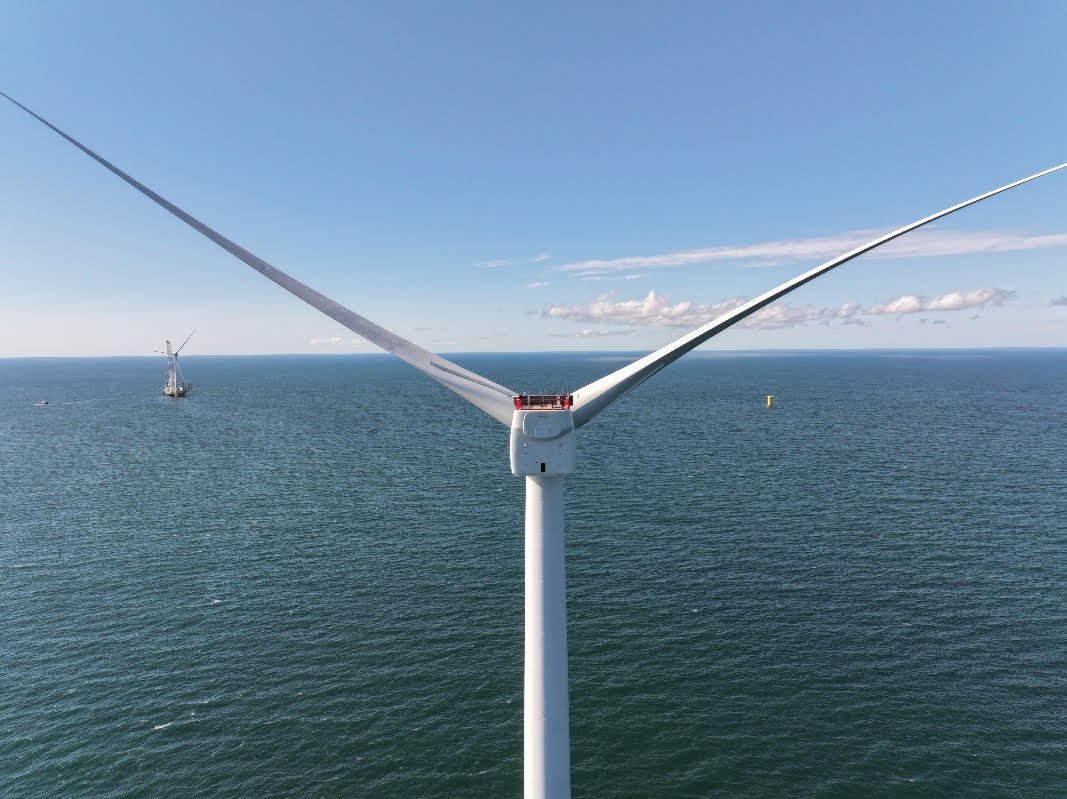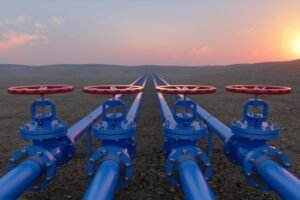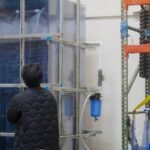Offshore wind turbines are finally delivering renewable energy to the U.S. grid, with two commercial-scale sites successfully sending power. Moments before midnight on Tuesday, a single turbine near Martha’s Vineyard accomplished a significant feat, delivering 5 megawatts of clean energy to the New England grid. This is just one of 62 turbines planned for the Vineyard Wind 1, owned by utility company Avangrid and wind energy investor Copenhagen Infrastructure Partners (CIP). Despite missing their initial goal of delivering offshore wind power by the end of 2023, the firms are ecstatic about this achievement.
According to Massachusetts Governor Maura Healey, this is a “historic moment.” In a statement, Healey shared her excitement about the Vineyard Wind 1 site, stating that it will soon provide enough energy to power over 400,000 households in Massachusetts. Avangrid and CIP plan to have five turbines operational by early this year, working towards their goal of powering homes and charging electric vehicles in the state.
The news from Vineyard Wind comes after another offshore site near Montauk Point, New York announced a similar milestone. Known as South Fork Wind, this project has two turbines installed, with one currently in operation. The owners, Danish energy firm Ørsted and utility company Eversource, have big plans for the site and aim to have an additional 10 turbines installed by early 2024.
Despite the support from the Biden administration, which has made offshore turbines a key part of its strategy to reduce climate pollution, the U.S. offshore wind industry has faced some setbacks lately. In October, Ørsted made the difficult decision to cancel two wind projects in New Jersey due to supply chain delays and high interest rates. Around the same time, Avangrid had to pay a hefty $16 million to back out of an agreement to sell power to Connecticut, though the project itself was not cancelled. And just recently, fossil fuel giants BP and Equinor terminated their contract with New York for the “Empire Wind 2” project, citing similar issues with interest rates and the supply chain. Essentially, these setbacks highlight the reality that it takes a long time for commercial-scale offshore wind projects to go live. In fact, projects that were planned before the pandemic are now less feasible due to rising costs and interest rates.
Fortunately, there are startups dedicated to driving down the price of wind energy and making it more accessible. One such startup is SkySpecs, which uses drones and AI to monitor and predict equipment failures in wind turbines, ultimately reducing downtime. This company has already secured an impressive $118 million in funding, including a $80 million Series D in 2022 with support from Goldman Sachs.
Another startup making waves in the wind energy industry is Aerones, which creates robots to clean and inspect turbine blades. By keeping the turbines in good operating condition, this technology helps mitigate pollution from oil leaks. This company, which received backing from Y Combinator, recently announced a grant of approximately $4.8 million from the European Union’s Innovation Fund.
Lastly, we have AirLoom, a startup backed by Breakthrough Energy, on a mission to reduce the cost of wind power by half. Their approach involves embracing a nontraditional design for offshore wind farms, resulting in a structure that could easily be mistaken for a modern art installation.
It’s exciting to see how these startups are driving innovation in the offshore wind industry and overcoming the challenges that come with it. With continued support and advancement, it won’t be long before we see more turbines successfully powering up the U.S. grid with clean, renewable energy.








